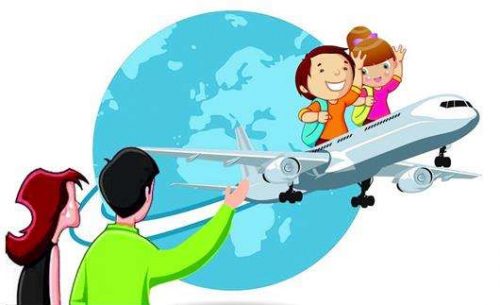1,The agency for Chinese students studying abroad
We can divide the industrial chain of the foreign intermediary industry into the language training of the front-end abroad, the intermediary consulting of the middle school students and the service market after the back-end study. Overseas language training is mainly to provide language training, including IELTS, TOFEL, SAT, etc., and the Chinese student recruitment agency provides consulting and application services for overseas students. After service, the overseas market mainly provides overseas students with all kinds of services such as overseas life, investment and so on. The top five agencies in the study medium occupy 58% of the market share, and the first ten institutions occupy 80% of the industry. The industry competition in the future must be the snatch between the top organizations. We see that the top organizations have been looking for opportunities for the layout of the whole industry chain, extending forward or backward.
2, language training abroad
The first hurdle for studying abroad is the language test. The scores of language tests directly affect the subsequent application schools, scholarships and so on. Therefore, 95% of the students who are going to study abroad will sign up for language training. At present, the examination of studying abroad includes IELTS, Tofu, GRE, SAT and so on. The courses of these types of training are various and the price is different. We are here to measure the scale of the market for foreign language culture for the time being based on the total number of students studying abroad. Because the students who participate in the language training course have a conversion rate when they are converted into foreign students, the scale of our calculation will be slightly lower than the actual size.
3,The scale of the overseas market
At present, the whole study market is 158 billion 909 million yuan, including 8 billion 292 million of the language training for abroad, 5 billion 302 million for studying abroad and 146 billion 215 million in the market after studying abroad.
4,Intermediary market pattern of studying abroad
With the reduction of the threshold of administrative entry and the increase in the number of students studying abroad, the number of foreign agencies has increased rapidly. As of October 31, 2015, a total of 441 institutions of study abroad (excluding certificates, canceled and expired institutions) had covered most areas, but mainly concentrated in economically developed areas. At present, JJL, EIC, Vision Overseas, AOJI,IGO, future abroad through the five foreign intermediaries to carve up about half of the intermediary market share, the whole intermediary industry shows several dominate. We believe that after twenty years of development, the overseas education intermediaries have formed certain brands and reputation.
The competition of the future industry must be carried out among these oligarchs, and the industry leaders will also emerge. However, the challenges faced by the traditional studying abroad are: the market growth rate is slowing down, the entry threshold is decreasing, and the competition is becoming increasingly fierce. The homogenization of products is serious, and the real value services are lacking. The number of DIY increases, and the dependence on intermediaries weakens. In the face of these changes, the traditional intermediary is also actively respond to the trend.
5, three major trends of Chinese students studying abroad
(1) “super young students” continuation of the trend with increased domestic family economic capacity, many countries for younger students to uphold the policy of opening to the outside world, such as “GAOKAO”(China examination to recruit university students) recognized countries and schools gradually increase and other factors, will stimulate the increase of the number of young students; on the other hand, with the development of Chinese “The Belt and Road” policy, increasing demand of foreign cooperative education, in 2016 there will be more foreign students to study abroad.
(2) the enrollment threshold of foreign universities and the number of applicants for studying abroad increased correspondingly. The difficulty of studying abroad is also increasing, and the competition is more intense. The Ivy League’s data from 2010 to 2015 show that its undergraduate acceptance rate is decreasing from the whole, and the top schools in other countries are no exception. More and more schools will ask students to carry out third party transcripts, which is likely to become a trend in the future. Therefore, in addition to keeping good results in the school, students who prepare to study abroad are also imperative to improve the background of soft power. In the case of few hardware conditions, the school will give priority to the students with rich practice, practice experience and scientific research projects.
(3) “after studying abroad service” is favored. Now, the definition of studying abroad is no longer a successful application and going abroad for further education. More Chinese student and parents are concerned about the development after studying abroad, and are willing to seek help from professional institutions. There are also more institutions for studying abroad to provide academic guidance, cross-cultural adaptation, employment, immigration and other post study services. In the future, the international educational institutions of the whole industry chain will become the trend of development to enable students to realize the “successful study abroad” to “the success of studying abroad”.



